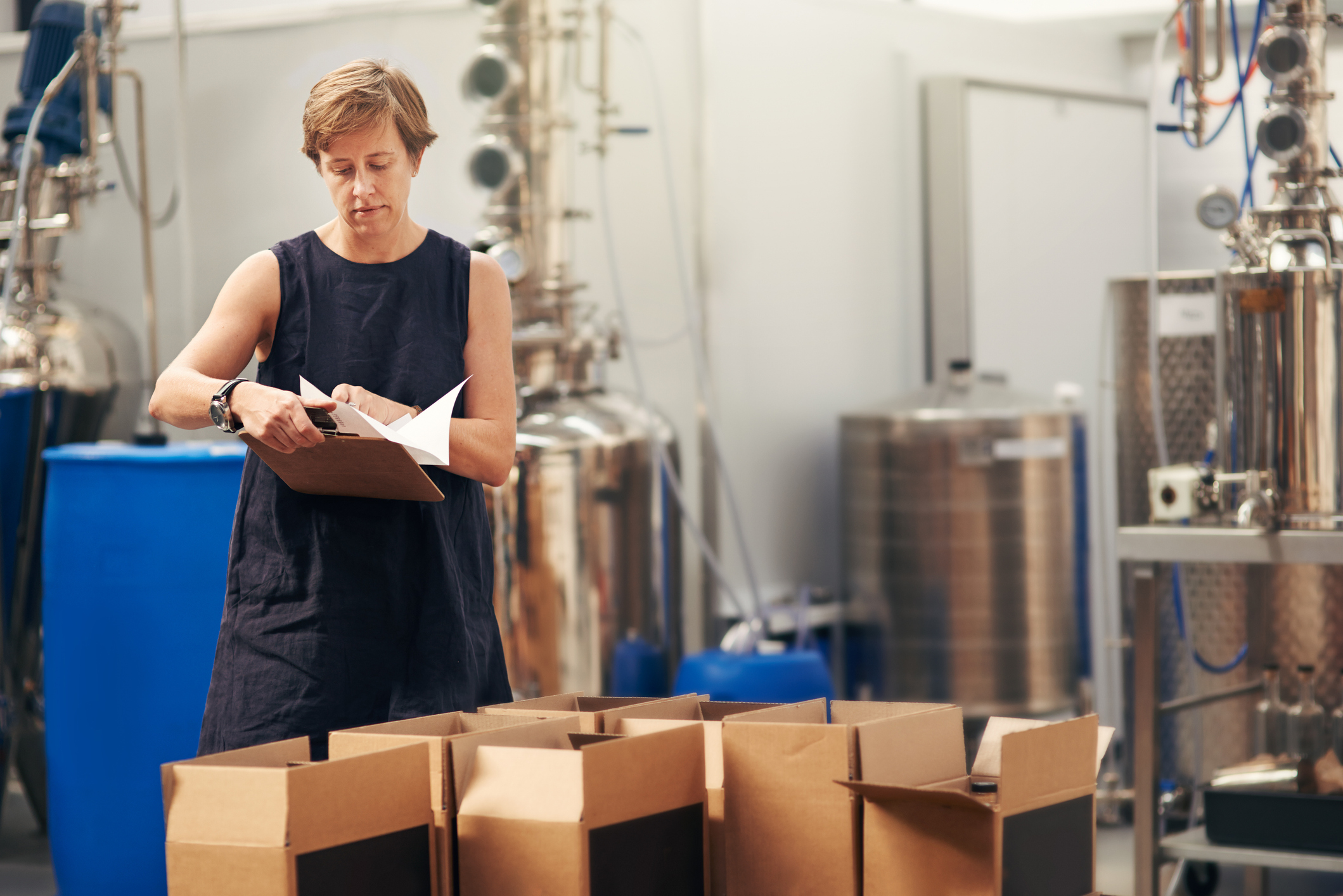Packaging in the spirits industry is much more than just a decorative element; it’s a crucial aspect of how products are protected, transported, and presented to consumers. From primary packaging that directly touches the product to tertiary packaging that ensures safe transit, each level plays a specific role in maintaining the quality and integrity of spirits. Let’s explore how packaging works in this industry and how it intertwines with factors such as supply chain management and recycling.

Primary, Secondary, and Tertiary Packaging: What’s the Difference?
In the spirits industry, primary packaging refers to the packaging that is in direct contact with the product—for example, the glass bottle that holds whiskey or gin. Its main purpose is to protect the liquid inside and preserve its quality from the moment it leaves the distillery until it reaches the consumer. Common materials used for primary packaging include glass bottles or plastic bottles, each chosen for specific types of products.
Secondary packaging, like a cardboard box or branded cartons, plays a role in transport and handling by bundling multiple primary packages together. It may not touch the product itself but serves to protect the bottles and provide branding for display purposes.
Finally, tertiary packaging—such as pallets wrapped in protective film—is all about transit packaging. It ensures safe transportation across long distances, minimizing the risk of damage during shipping. Together, primary, secondary, and tertiary packaging work in unison to keep products secure throughout their journey from the distillery to the retailer.
Factors Affecting Lead Times in Packaging
The spirits industry also faces the challenge of managing lead time, especially in the packaging process. Lead time refers to the amount of time required to move a product through different stages of the production process, from raw materials to the finished product. Several factors can affect lead time—from delays in the supply chain to the complexity of the packaging design itself.
For instance, long lead times can result from complex packaging designs, requiring more manufacturing lead time. On the other hand, efficient supply chain management can help in reducing lead times, offering a more streamlined path from purchase order to delivery. This is why it’s essential to calculate lead time accurately and anticipate bottlenecks, especially when working with custom designs that require secondary and tertiary packaging.
By utilizing more sustainable practices like recycled content for packaging materials such as recycled cardboard boxes, companies can also help streamline production and decrease lead times. Many distilleries now incorporate recycling programs that focus on reusing recycled paper or recycled plastics to create their packaging. This not only reduces natural resources consumption but also aligns with growing consumer demand for environmentally responsible products.
The Role of Recycling in Packaging
Sustainability is an increasingly important factor in the packaging world. In the United States, the spirits industry is gradually embracing eco-friendly practices by focusing on recycling programs and using post-consumer materials in their packaging. Many common recyclables—such as plastic bottles and recycled newspaper—are now being repurposed to create new products made from recycled materials. Some companies are working with municipal solid waste recovery facilities to ensure their packaging can be easily sorted, recycled, and turned into new products.
The benefits are clear: not only does sustainable packaging contribute to the environment, but it also reduces production lead time by making use of readily available recycled content. For instance, recycled paper and recycled plastics can be sourced faster than raw materials, ultimately leading to shorter lead times and more efficient production.
Packaging as a Brand Statement
While packaging protects the product, it also serves as a vital part of the brand’s identity. The type of packaging chosen reflects the brand’s values, whether through sleek, minimalist designs or bold, intricate branding. More importantly, as consumers increasingly favor environmentally friendly products, packaging made from recycled materials serves as a marketing advantage, showing that the brand is committed to sustainability.
Spirits brands that integrate recycled content into their packaging materials—whether in the primary packaging like bottles or in secondary and tertiary packaging like shipping cartons—send a strong message to environmentally conscious consumers.
Conclusion
Packaging in the spirits industry is a multifaceted process that balances protecting the product, reducing environmental impact, and managing supply chain efficiency. From primary packaging that directly touches the product to secondary and tertiary packaging that ensures safe transport, every level of packaging plays an essential role. With growing awareness of sustainability, incorporating recycled content and minimizing lead times through efficient practices is no longer just a trend but a necessity for future success. By embracing these changes, the spirits industry can continue to innovate, thrive, and meet the demands of today’s environmentally conscious consumers.
